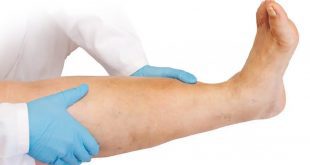By Denise A. Pancyrz – Diabetes Reversal & Holistic Lifestyle Coach, Speaker, Author
What does one find searching the Internet to explain prediabetes? According to WebMD.com, prediabetes is when your blood sugar level is higher than it should be but not high enough to be diagnosed with diabetes. It may be referred to as impaired fasting glucose or impaired glucose tolerance.
In terms of lab results, a diagnosis of prediabetes is when your A1c is between 5.7% to 6.4% and/or fasting glucose is over 99 mg/dL compared to a diagnosis of type 2 diabetes when your A1c is 6.5% and above.
For many patients, the difference between these diagnoses can be confusing, leaving patients unsure of how to move forward.
What is the difference between a prediabetes diet and a type 2 diabetes diet?
Should your exercise program be different?
Is medication different?
Catching disease at the earliest possible time is of course, always preferred. What if prediabetes is not the early indication of being on the path to type 2 diabetes?
Prediabetes indicates you already have a metabolic impairment, therefore, it begs the question, does it suggest this is actually the early stage or stage one of type 2 diabetes?
Now thinking of prediabetes as the disease, type 2 diabetes, does that change your view of when to start taking action to slow or reverse the progression of this disease? It is my view, that you either have or do not have a disease. Yet, there can be warnings when your system is not functioning at an optimal level.
That warning is insulin resistance. It is a metabolic impairment that can begin prior to a prediabetes diagnosis.
Insulin resistance is when the cells in your muscles, fat, and liver do not respond well to insulin. When that begins to happen, your cells cannot effectively take glucose from your bloodstream. Insulin is a hormone that acts like a key to your cells. Like having the key to your front door.
No one can enter without that key.
Your system is so smart that it realizes there is an issue when glucose stays in your bloodstream. So, your pancreas steps up and produces more insulin to help get that glucose into your cells.
Over time, your cells continue to become resistant to insulin as your pancreas works to continue to produce more and more.
In the beginning stages of insulin resistance, your A1c test result may even be in the non-diabetic range of less than 5.7%.
The A1c test is a wonderful guide in showing your average glucose over a three to four-month period. However, it is not the right test to tell you about insulin resistance.
A simple blood test for insulin is available. Although, there are warning signs that your body will share with you to indicate insulin resistance may be an issue:
• Weight gain. It sounds so basic doesn’t it? But yes, it can be that simple of a sign. You are gaining weight.
• Hypertension, that is when your blood pressure is increasing. High insulin levels, hyperinsulinemia, raises blood pressure by decreasing sodium and water excretion in the kidneys and constricts the blood vessels. (The opposite can happen if you have high blood pressure, that can cause or add to insulin resistance.)
• High triglycerides. When your system cannot effectively store the carbohydrates that you are consuming, those carbs convert into triglycerides.
Unfortunately, because so many people are medicated with statins, you really don’t know how your health is being impacted. Your triglycerides may be normal due to your statin, therefore, you may assume your diet is fine, however it may not be. If your triglycerides are not in normal range while on a statin, a blood test for insulin resistance may be considered.
• Skin tags. You can get skin tags for several reasons, but it can also be a sign of insulin resistance. Even if your A1c is below 5.7%.
Over time, high insulin can cause inflammation. With insulin resistance in our adipose tissue, which stores fat, it leads to inflammation. High insulin levels indicate your pancreas is working harder and faltering leaving you with high glucose levels. These are the common issues for those with the eventual diagnosis of type 2 diabetes.
By looking for the warning signs of insulin resistance rather than prediabetes, we can have a greater effect in decreasing the number of patients that have to hear the diagnosis of type 2 diabetes.
It may be time to ask the question, “Is prediabetes or insulin resistance the real precursor to type 2 diabetes?”
To hear more on this and other diabetes discussions, tune in to The Virgin Diabetic Podcast available on Spotify, Stitcher, iTunes, and TuneIn.
Visit ReverseMyDiabetes.net to book a free consultation.
Call (888) 848-1763
Email Denise@ReverseMyDiabetes.net
 Central Florida Health and Wellness Magazine Health and Wellness Articles of the Villages
Central Florida Health and Wellness Magazine Health and Wellness Articles of the Villages



